|
also on this website: Kilimanjaro
Mount Meru Arusha
NP Lake Manyara NP
Ngorongoro Crater
Ngorongoro Crater, Tanzania
Natural Wonder in a Day Trip

The Ngorongoro Crater is part of the Conservation Area which has 8000
square meters in total. It is not a National Park because the Tanzanian
government wants to break new ground here. The coexistance of humans, that
is the native Massai tribe, and the wild animals is to be assured. The
Ngorongoro Crater is the caldera of a collapsed volcano, with a diameter
of 23K and a depth of 600 meters. More than 20.000 animals live in the
crater. They can enter and leave the crater freely. but most of them stay
here all time because there is no lack of water or food.
Together with the neighboured Serengeti National Park the Ngorongoro
Conservation Area forms the largest concentration of wild animals all over
the world. About 1.5 million wildbeests, 250.000 zebras and many thousands
of gazelles are at home here. There are also 42.000 Massai shepherds with
their flocks of cattle, sheep, goats and donkeys.
Visitors can enter the crater only by taking a jeep driven by licensed
guides and the cars can only be left at marked picknick places. Outside
the main crater guided walkes are offered to more and smaller craters,
through georges and to the top of the mountain Oldonyo Lengai (2.878m).
(below: click on photo to enlarge)
| |
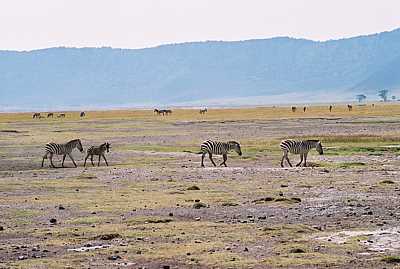 |
The second most common animal is the
zebra (behind the wildbeest). |
| |
|
|
| |
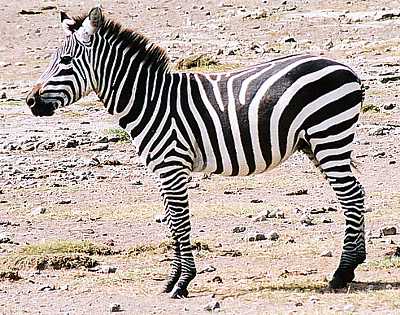 |
Zebra
Equus quagga
shoulder height up to 150 cm
body length up to 220 cm
weigth up to 360 kg
age up to 20 years, in captivity 30
Zebras feed on grass and herbs. They live in small groups of up to 20
animals. As they don't fight for areas, sometimes they gather in
bigger herds.
The coat is different with every zebra. |
| |
|
|
| |
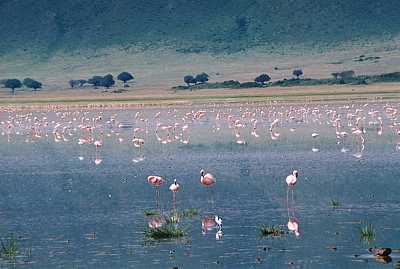 |
At Lake Magadi, a salt lake, flamingos
gather. Phoeniconaias minor
More than 3 million flamingos live in East Africa. Using their buckled
beak they filter plankton out of the water. |
| |
|
|
| |
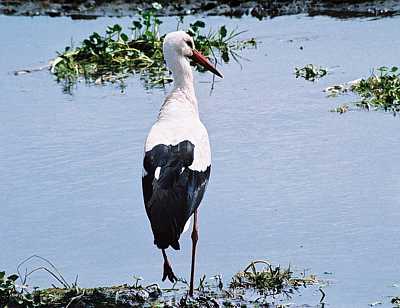 |
White Stork
Ciconia ciconia
Very well known in Northern Europe is the white stork. Why doesn't he
stay in Africa all year?
He has many competitors in Africa who fed on the same sources as he
does. And in Europe summer days are longer, so that he has more time
to search for food. |
| |
|
|
| |
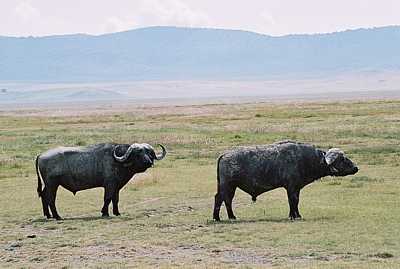 |
African Buffalo
Syncerus caffer
body length up to 300 cm
shoulder height up to 150 cm
weight up to 900 kg
horn length up to 100 cm
age up to 16 Jahre
Buffaloes fight agressively against predatores. The rangers
demonstrate high respect for them. A buffalo can run with speed of up
to 50K/h.
|
| |
|
|
| |
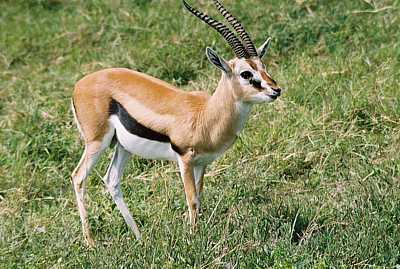 |
Thompson Gazelle
Gazella thomsomi
|
| |
|
|
| |
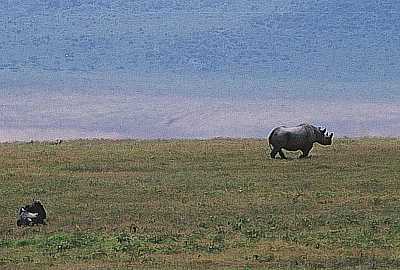 |
The rhino keeps its distance. |
| |
|
|
| |
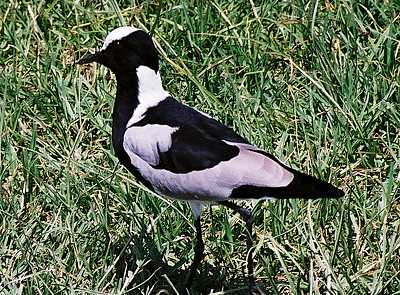 |
Blacksmith Plover
Vanellus armatus
|
| |
|
|
| |
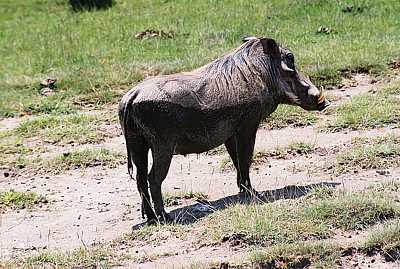 |
Warthog
Phacochoerus aethiopicus
shoulder heigt up to 75 cm
body length up to 130 cm
weight up to 85 kg
age up to 12 years |
| |
|
|
| |
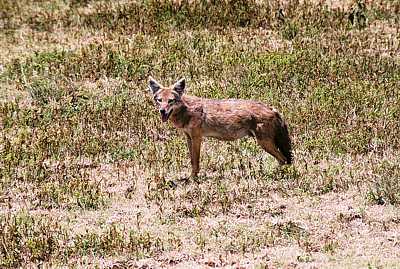 |
Black-backed Jackal
Canis mesomelas
shoulder heigt up to 50 cm
body length up to 105 cm
weight up to 15 kg
The jackal is an omnivore. It hunts young gazelles, hares and other
rodents. It also likes vegetarian food, like berries and tubers. If
there is the opportunity it would also take the rest of a lion's meal.
|
| |
|
|
| |
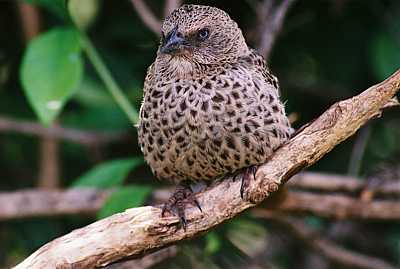 |
Rufous Tailed Weaver
Histurgops ruficauda
Endemic bird in Tanzania.
(thanks to Brigitte) |
| |
|
|
| |
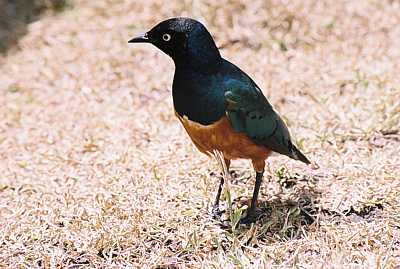 |
Superb Starling
Lamprotornis superbus
|
| |
|
|
| |
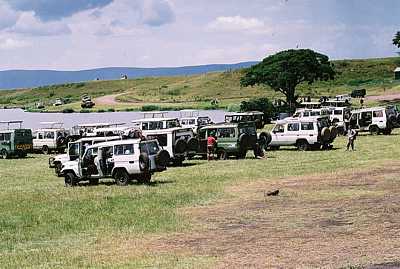 |
Picknick Site |
| |
|
|
| |
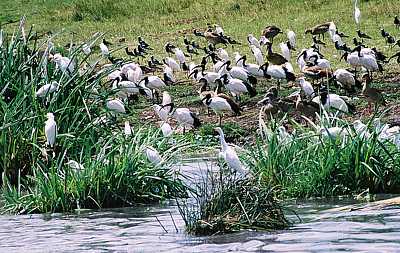 |
Ibisses and little egrets |
| |
|
|
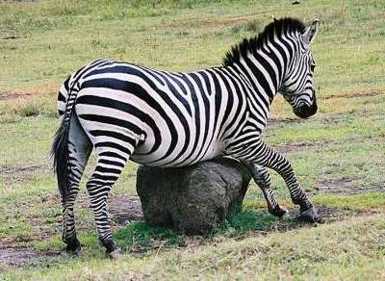 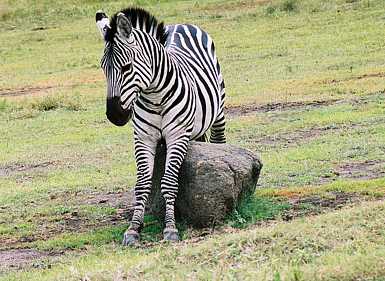 |
| |
|
|
| |
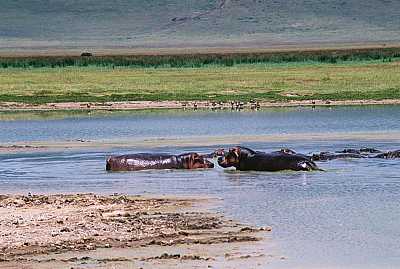 |
Hippos stay in the water during day time. |
| |
|
|
| |
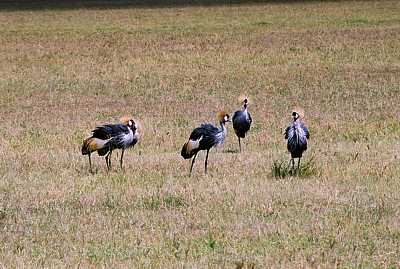 |
Black-crowned Crane
Balearica pavonina |
| |
|
|
| |
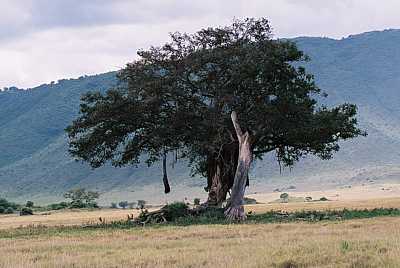 |
Lerai Forest, within the crater. |
| |
|
|
| |
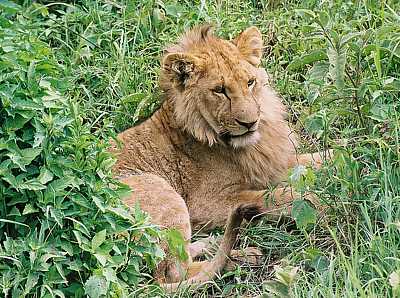 |
Relaxing in the afternoon. |
| |
|
|
| |
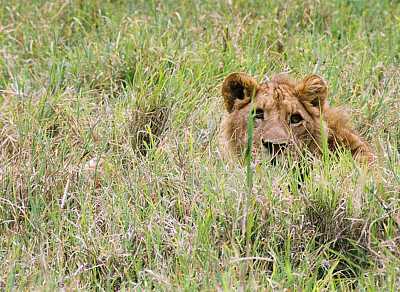 |
What kind of clicks do disturb me? |
| |
|
|
| |
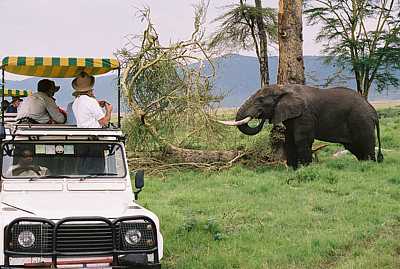 |
A meeting in Lerai Forest. |
| |
|
|
| |
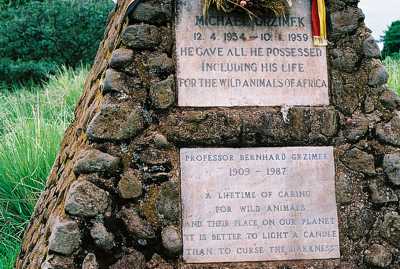 |
German grave.
Michael Grzimek, 1934-1959
"He gave all he possessed including his life for the wild animals
of Africa."
Prof. Bernhard Grzimek, 1909-1987
"A lifetime of caring for wild animals and their place on our planet.
It is better to light a candle than to curse the darkness." |
| |
|
|
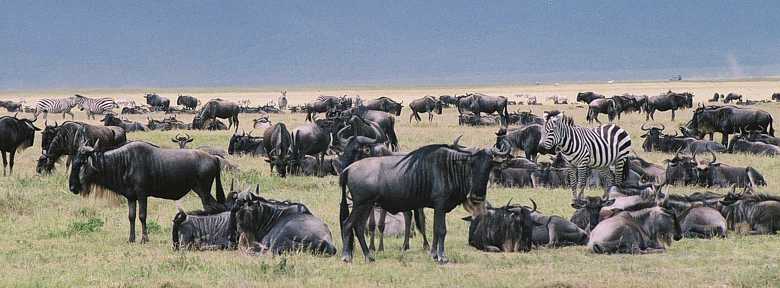 |
Literature (Amazon UK - commissions are donated without any
cuttings)
Links
Ngorongoro
Conservation Area official tourism site
African Dream Safaris
Paul Gross
very nice private page
also on this website: Kilimanjaro
Mount Meru Arusha
NP Lake Manyara NP
Ngorongoro Crater
|
























